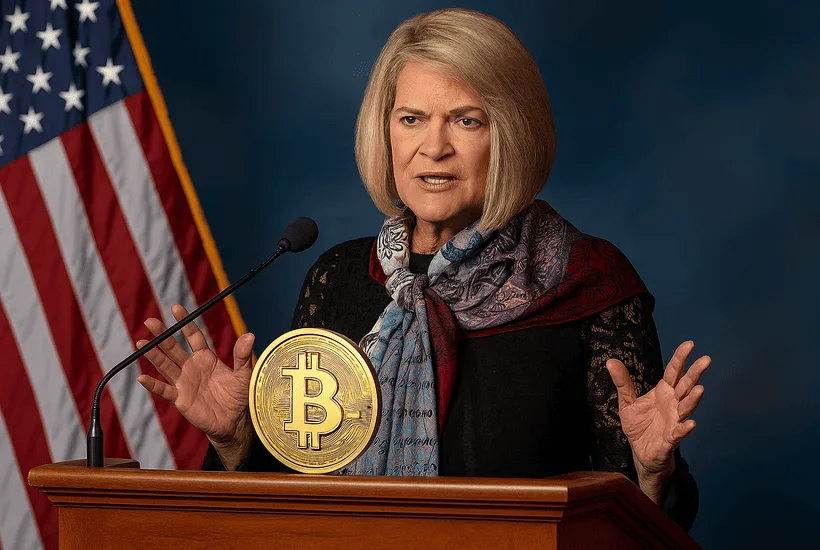- Senator Cynthia Lummis is confident that a crypto market structure bill will be on President Trump’s desk by the end of 2025
- The bill will build upon the bipartisan Digital Asset Market Clarity (CLARITY) Act, which passed the US House of Representatives in July
- Lummis and Senate Republicans aim to focus on market structure first, with CBDC regulation potentially delayed until 2026
Wyoming Senator Cynthia Lummis, a leading Republican advocate for digital asset regulation, has confidently stated that the US will have a crypto market structure bill ready for President Donald Trump’s approval by the end of 2025. During her speech at the Wyoming Blockchain Symposium, she outlined the steps required to push the bill through the Senate and reach the president’s desk, aiming for final passage before Thanksgiving 2025.
Cynthia Lummis outlines timeline for crypto market structure bill
Senator Cynthia Lummis is leading the Republican charge in the US Senate to pass a comprehensive market structure bill for digital assets. Speaking at the Wyoming Blockchain Symposium, Lummis announced her belief that the bill will make it to President Trump’s desk before the end of 2025. She emphasized that Republicans’ strategy includes passing the bill through the Senate Banking Committee by the end of September, with the Senate Agriculture Committee taking up the matter in October.
This timeline is part of broader efforts to ensure the US financial regulators, including the Securities and Exchange Commission (SEC) and Commodity Futures Trading Commission (CFTC), establish clear guidelines for digital assets. Lummis expressed hope that the bill could be sent to the president for signature before Thanksgiving, signaling a swift pace in the legislative process.
Newsletter
Get weekly updates on the newest crypto stories, case studies and tips right in your mailbox.
CLARITY Act as foundation for new bill
The market structure bill that Lummis and her colleagues are pushing builds upon the groundwork laid by the US House of Representatives, which passed the Digital Asset Market Clarity (CLARITY) Act in July. The bill saw support from 78 Democrats, reflecting bipartisan backing for clearer digital asset regulation.
Lummis revealed that the Senate’s version, tentatively titled the Responsible Financial Innovation Act, would draw heavily from the CLARITY Act. She expressed a desire to maintain the bipartisan spirit of the CLARITY Act while making necessary adjustments in the Senate to address specific concerns. This “tweaked” version of the CLARITY Act is expected to serve as the basis for the final legislation.
Support for digital asset regulation grows
Senator Lummis’ remarks echoed those of Senate Banking Committee Chair Tim Scott, who also spoke at the Wyoming Blockchain Symposium. Scott speculated that between 12 and 18 Democrats could support the market structure bill once it clears the Senate committees. With bipartisan backing growing, the bill is positioned for an easier passage in the Senate.
The Senate’s attention to market structure regulation is part of a broader legislative agenda focused on cryptocurrency and digital asset regulations. In addition to the market structure bill, the House passed the GENIUS Act to regulate stablecoins and the Anti-CBDC Surveillance State Act. While the GENIUS Act has already been signed into law, the anti-CBDC bill has faced much less support from House Democrats, reflecting the division in opinion over the future of central bank digital currencies (CBDCs).
Also read: Senator Tim Scott expects Bipartisan support for US crypto market structure bill
Focus on market structure first, CBDC bill may be delayed
Lummis and other Republican senators have signaled their intention to prioritize the market structure bill over other cryptocurrency-related legislation. As a result, the bill to regulate CBDCs may be pushed into 2026, further complicating the timeline for digital currency regulation in the US.
Despite the challenges, Lummis and her colleagues are confident that a robust crypto market structure law will be passed by the end of 2025, setting a strong regulatory foundation for the future of digital assets in the United States.













